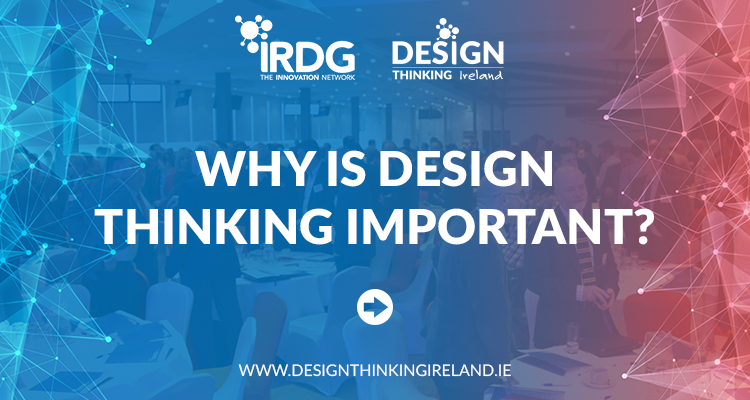If you’ve been following us recently, you’ll notice that we have been writing a lot about Design Thinking. We are gearing up for our Design Thinking for Innovation and Business Growth event which will be held in June. We have a fabulous line-up of speakers (and only one more day to book at Early Bird pricing).
Design Thinking is a systematic process of thinking which empowers even the most traditional thinker to develop new, innovative solutions to the problem at hand. Everybody can be creative by following this process – it’s human-centred creativity with purpose.
So, why is Design Thinking important?
If you’ve ever spent any time around a three year old, you are no stranger to the question “Why?” Let’s momentarily unleash that inner curiosity and explore WHY we need design thinking.
Today’s reality demands innovation
The times that we live in demand innovation. It is impossible for a business to really make waves without innovating. Design Thinking is the tool kit for innovation. And yet, it’s laser targeted to focus on the core problem. Too many once massively successful companies have disappeared into oblivion by believing what worked before will work. Times have changed. Customers have changed. Lifestyles have changed. The way we communicate has changed. In order for a business to stay current, they must move with these changes. It’s impossible to predict the future. Design Thinking is like a map…you may not know from the beginning exactly where it will take you, but you can be confident that the destination will be innovative, relevant and amazing!
Faced with an insurmountable task?
Understanding the need to innovate is one thing. But being tasked with the challenge of doing it is another. It can seem insurmountable and overwhelming. Like telling a novice to climb Mt. Everest. Design Thinking takes the challenge or problem and drills it down into small bite-size pieces, enabling you to drill down to the core issues. From there, you can see clearly and piece together the most critical aspects to devise a strongly relevant solution.
What if there is no market?
A common concern in developing a new product or service is “Will there be a market?” Design Thinking involves the market from the get-go. In fact, before you even think about developing a product or service, you are spending time with the market, understanding their needs and the realities of their world. In essence, your market is working in tandem with you throughout the whole process – from zoning in on the real problem, to tweaking the solution throughout development. The problem of having a market isn’t a problem at all with design thinking. This is because design thinking begins with, and is rooted in, people.
It’s always about people
Statistics and market research can give you certain insights, but when an engineer gets out and spends time with the end-user, the insights become far more tangible. Beginning with a thorough understanding of the people and problems you are developing for empowers you to create and solve on an entirely different plane. Now, you aren’t targeting faceless 35 year old women, but Lisa, a 35 year old professional, mother and wife, with real needs, challenges – and a real voice. Design Thinking is empathetic and personal in nature and doesn’t exist without people. Design thinking keeps you in tune with the real customer with real problems, empowering you to create real solutions.
Fail Fast
8 out of 10 businesses fail. Design Thinking eliminates the risk of ultimate failure by encouraging failure. Sound counter-intuitive? The truth is, we learn far more from failure than we could ever learn without it. Design Thinking is systematically developed to encourage experimentation, coupled with prototyping and feedback, allowing you to fail and fail fast, leading you to recognise and eliminate the weak areas so that you can ultimately succeed.
Breaks you out of the box
Design thinking breaks your preconceptions of what a good solution would be and unleashing new undiscovered possibilities. A good example of this is Proctor & Gamble who initially set out to develop a better cleaning detergent. Design Thinking led them to realise customers didn’t need another detergent on the market – but did need a faster, easier way to clean. The result was the Swiffer, a revolutionary new mop which proved to be massively successful for them.

